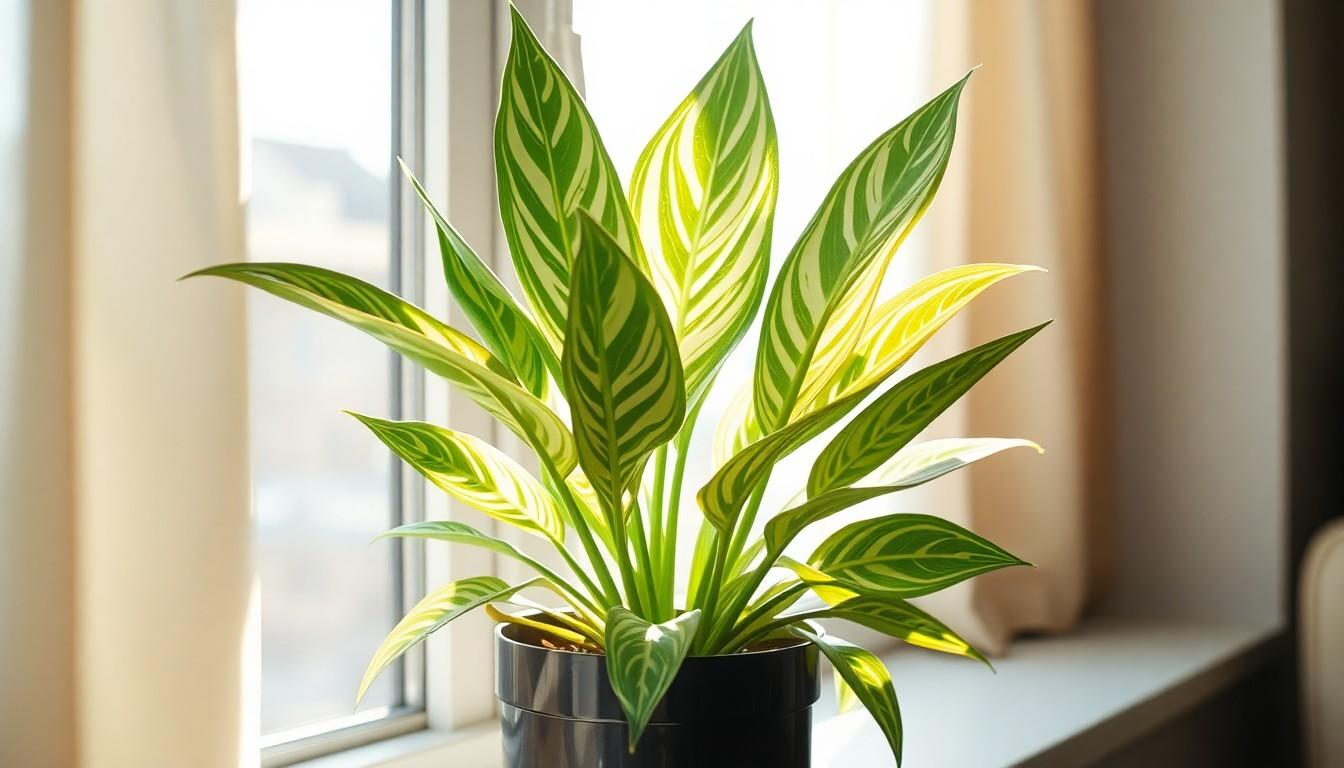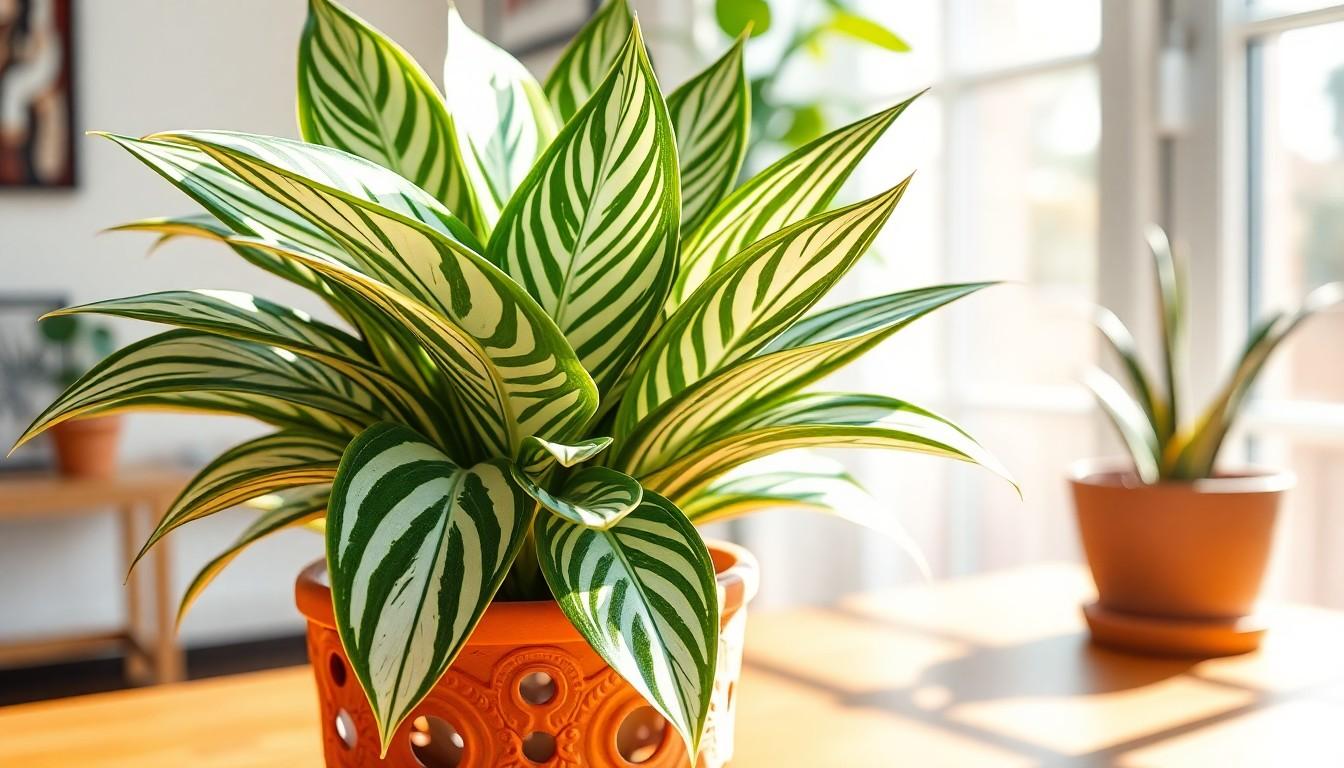If you’re on the hunt for a plant that’s as stylish as it is low-maintenance, the zebra plant might just be your new best friend. With its striking striped leaves, this succulent brings a touch of the wild right into your living room. Plus, it won’t judge you for skipping a watering session or two—after all, it’s a succulent!
Overview of Zebra Plant Succulents
Zebra plants are striking succulents that thrive in indoor settings. Their unique appearance and minimal care requirements make them popular choices for succulent enthusiasts.
Description and Characteristics
Zebra plants, scientifically known as Haworthiopsis fasciata, feature thick, fleshy leaves adorned with white stripes. These striped patterns give the plant a bold, textured look. Typically, leaves grow in rosettes, giving the plant a compact and appealing shape. Mature zebra plants can reach heights of 5 to 6 inches, with a spread of about 12 inches. These succulents store water in their leaves, allowing them to tolerate periods of drought. They flourish in bright, indirect sunlight and prefer well-draining soil to prevent root rot.
Varieties of Zebra Plants
Different varieties of zebra plants cater to diverse aesthetics. Haworthiopsis attenuata stands out with its elongated leaves and pronounced striping, making it a favorite. Another variety, Haworthiopsis limifolia, boasts thicker leaves and a more robust appearance. Aloe variegata, often confused with zebra plants, also presents similar patterns but possesses a different growth habit. Each variety adapts well to various environments, making them versatile additions to any indoor garden. Care requirements across varieties remain similar, emphasizing bright light and minimal watering.
Essential Care Requirements

Zebra plants require specific care to thrive and maintain their striking appearance. Understanding their essential needs ensures optimal health and growth.
Light Requirements
Bright, indirect sunlight helps maintain the vibrant color of zebra plants. They’re sensitive to direct sunlight, which can scorch their leaves. A well-lit room with filtered light proves ideal. Placement near east or west-facing windows usually works well. Insufficient light may lead to stunted growth or pale leaves. Regularly rotating the plant can also ensure even exposure to available light.
Watering Guidelines
Watering zebra plants needs careful attention to avoid overwatering. The general rule suggests allowing the soil to dry out completely between waterings. Using a pot with drainage holes prevents excess moisture from lingering. During the growing season, typically spring and summer, watering every couple of weeks suffices. During dormancy in fall and winter, reducing the frequency to once a month helps maintain the plant’s health. Always check the soil moisture before adding water to ensure the plant remains happy and hydrated.
Soil and Potting Needs
Zebra plants thrive in specific soil and potting conditions that support their growth and storage of water. Selecting the right mix is critical for their overall health.
Best Soil Mix for Zebra Plants
A well-draining soil mix is essential for zebra plants. Combining cactus mix with perlite creates a porous environment that prevents water retention. Using ingredients like coarse sand and peat moss can enhance drainage. Aim for a pH level between 6 and 7 to promote nutrient availability. Regularly checking the soil for compaction helps maintain optimal aeration, ensuring the roots can access oxygen.
Choosing the Right Pot
Selecting the right pot influences zebra plant growth. Opt for a pot with drainage holes to prevent water accumulation. Terracotta pots are preferable due to their breathable nature, allowing moisture to escape easily. Size matters; choose a pot that is slightly larger than the current root ball. Repotting every couple of years provides fresh soil and space for growth. Assessing the pot’s aesthetic also enhances indoor decor, complementing the zebra plant’s striking appearance.
Common Problems and Solutions
Zebra plants can thrive indoors, but they may encounter some common issues. Addressing these problems promptly enhances their health and appearance.
Pests to Watch For
Aphids and mealybugs are common pests that affect zebra plants. Inspect leaves regularly for tiny insects or sticky residue. If detected, treating plants with insecticidal soap effectively manages these pests. Remove heavily infested leaves to prevent further spread. Keeping the plant’s environment clean and dust-free discourages pest attraction. Regularly check for signs of spider mites, offering specific attention during dry conditions.
Handling Overwatering Issues
Overwatering can lead to root rot in zebra plants. Signs include yellowing leaves and mushy stems. Allowing the soil to dry out entirely before rewatering prevents this issue. Ensuring pots have proper drainage holes reduces excess moisture accumulation. If root rot occurs, removing the plant from the pot and cutting away affected roots is essential. Switching to a well-draining soil mix enhances moisture retention management. Observing a watering schedule tailored to the plant’s needs maintains its health.
Conclusion
Caring for a zebra plant can be both rewarding and straightforward. Its striking appearance and resilience make it a perfect choice for any indoor space. By providing the right light conditions and allowing the soil to dry out between waterings, owners can enjoy a healthy and vibrant plant. Regular checks for pests and ensuring proper drainage will help maintain its beauty and longevity. With a little attention to its needs, the zebra plant can thrive and enhance any home decor with its unique charm.

